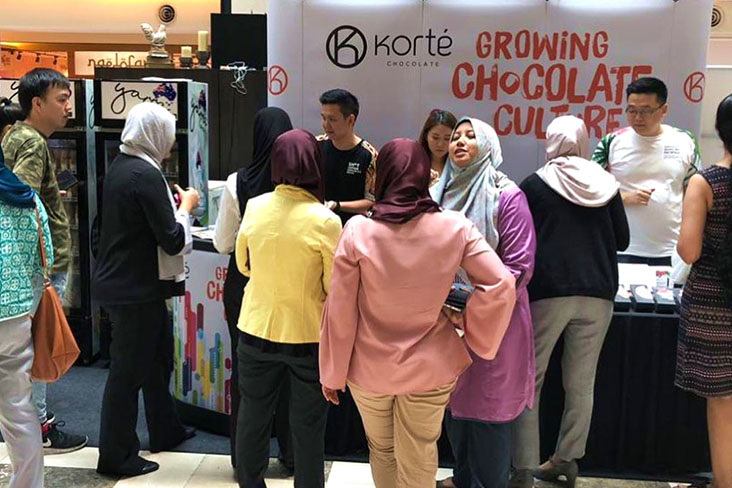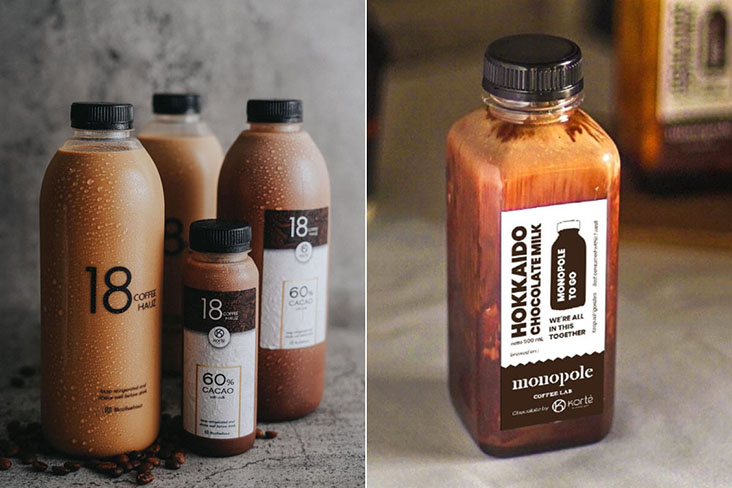KUALA LUMPUR, MAY 30 — You’d think something as basic as hot chocolate beverages are a done deal. Everyone has their favourite brand. There isn’t room for any newcomers to a saturated market.
Or so conventional wisdom would inform you.
Shane Tan, former senior barista at Pulp, the Malaysian outpost of PPP Coffee in Bangsar, and local F&B (food-and-beverage) industry veteran, believes otherwise. A brand evangelist for Korté Chocolate, he would have you reconsider the humble chocolate drink.
Tan says, “Having been around cafés and working in coffee, there was always the lack of options in a good cup of hot chocolate available on café menus. I often found that the chocolate was too milky and didn’t really justify the price point I was paying for its value.”
The dissatisfaction made Tan look around for alternative supplies that he could recommend to his friends, many of whom were and are still operating cafés. Serendipitously, he encountered Jeffry Lukito, the founder of Korté Chocolate who had experienced the same dilemma.
Established in 2014 in Surabaya, Indonesia, Korté Chocolate revolves around the premise that chocolate is a culture and could grow alongside the then burgeoning specialty coffee culture. The company began with a series of powderised single origin chocolates, designed for brewing.

Tan shares, “The idea started when my colleague Jeffry started hanging out in cafés and realised that the hot chocolate served were lacking the oomph you would normally get when eating chocolates.”
The reason for this bland, universal drinking chocolate is one of pure convenience: a good traditional hot chocolate takes time to make while there are many instant chocolate mixes available in the market. You can't blame any café operator for going for the cheaper, faster option.
Tan claims that most instant chocolate mixes “are filled with fillers that have no health benefits and have very little chocolate content. Aside from its addictive taste, chocolate has been known to have many health benefits as it’s filled with antioxidants and anti-inflammatory properties, but not all are created equal.”
Realising that there is a gap in the market, Tan joined Korté Chocolate and began promoting the brand at various F&B and coffee-related events such as the Coffee & Art Fringe Festival Asia (CAFFA).
Bemoaning how commercialisation has muted the health benefits of widely-available drinking chocolate mixes, Tan adds that sourcing good cacao in Asia is another major challenge as most cacao in the region are not produced for high-quality chocolate but sold to candy bar manufacturers.

“It took some time to look for farmers and educate them on proper cacao processing and fermentation. As a result, we are able to get a much higher quality cacao with its own unique distinct flavour profiles from the region they were grown in.”
Examples of these single origin chocolates include honey processed and medium roasted West Java beans. Containing 60 per cent cacao, this Trinitario & Forastero varietal has intensely bittersweet with cashew and malt notes.
Also at 60 per cent cacao is the light roasted Bali Samsaman that is bright and floral with subtle notes of orange and jasmine. For a darker chocolate flavour, the buttery and creamy Sulawesi Ranoha contains 72 per cent cacao. Both the Bali and Sulawesi chocolates are small batch microlots.
Tan says, “Whenever we share news with the farmers and producers that their chocolate were well received, it gives them more motivation to grow better cacao each year and instils a sense of pride in them for their hard work.”

Korté Chocolate primarily focuses their business on the beverage industry by supporting the drinking chocolate segment in their menu. Tan says, “We quickly grew as clients got back to us with more orders as the customers who ordered got hooked with our chocolates.”
Currently Korté Chocolate works with more than 1,000 coffee shops and retail partners. Their products are available in four countries – Malaysia, Indonesia, Singapore and Brunei — with more than six tonnes of drinking chocolate produced every month.
Then the coronavirus pandemic hit worldwide. Tan says, “Good drinking chocolate is there to stay in the market but with the recent development of Covid-19, there’s been a big drop in consumption in cafés as many were forced to stop operations during the recent Movement Control Order (MCO).”
Korté Chocolate has had to re-strategise to adjust to the fresh demands brought about by the pandemic and ensuing quarantine situations. This includes expanding their offerings online to consumers with Homepacks and Chocolate Milk in bottles for delivery.
Some of their partners, such as Monopole Coffee Lab and 18 Coffee Hauz, have seen their cold chocolate beverages selling briskly as these perform well as product deliveries.

Tan shares, “Covid-19 has been affecting most businesses. For us, that’s a big dip in our current operations. As our products were not available for online delivery prior to Covid-19, it’s been a challenge introducing our drinking chocolates to home consumers, as many do not normally have hot chocolate at home.”
This is far from unusual. Almost every F&B company has had to expand some part of their business online, if they haven’t already. Some would consider the platform already crowded; others see untapped potential still.
One certainty, according to Tan, is that “everyone has to rethink their branding and marketing strategy to appeal to the masses.” This appears to be particularly true for small manufacturers and suppliers behind the supply chain whose businesses were more focused towards B2B (business-to-business) sales.
Tan concludes, “We have to be creative at a time of crisis, in the time of social distancing. Being online will help bring us closer to our customers and adapt to their needs in this new normal.”
Find out more at www.kortechocolate.com, www.instagram.com/kortechocolate/ and www.instagram.com/kortechocolate.my/.






















